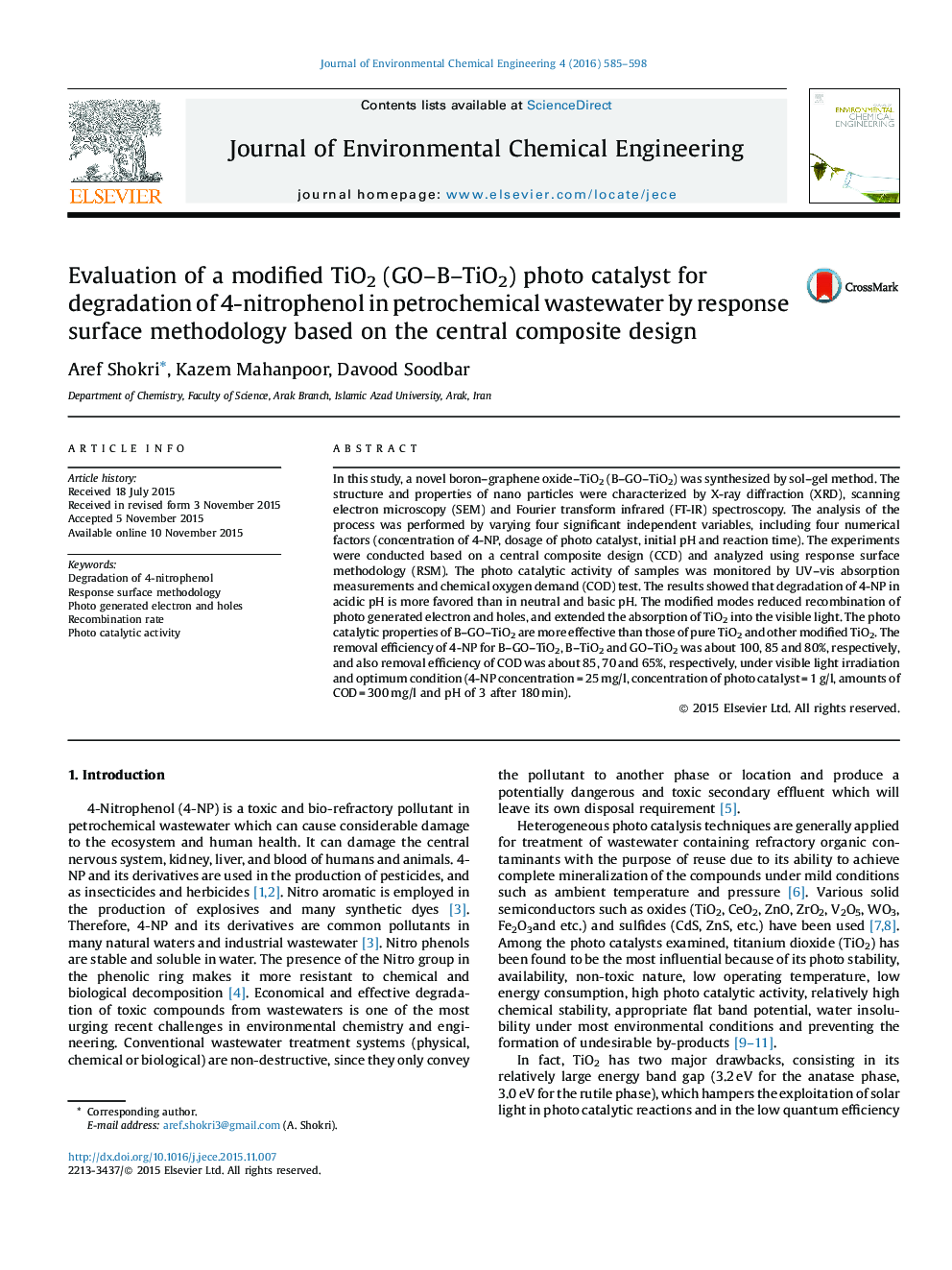| Article ID | Journal | Published Year | Pages | File Type |
|---|---|---|---|---|
| 221913 | Journal of Environmental Chemical Engineering | 2016 | 14 Pages |
•Synthesize and characteristic of GO–B–TiO2 were investigated in this manuscript.•Degradation of 4-NP in a suspended photo catalytic reactor under visible light irradiation was investigated.•The effect of initial COD concentration, initial pH and catalyst loading on photo catalytic performance was investigated.•The modified TiO2 with graphene oxide and boron (GO–B–TiO2) was a novel photo catalyst and it had a a narrower band gap and subsequently higher photo catalytic activity compared to single modified TiO2 (B–TiO2 and GO–TiO2).
In this study, a novel boron–graphene oxide–TiO2 (B–GO–TiO2) was synthesized by sol–gel method. The structure and properties of nano particles were characterized by X-ray diffraction (XRD), scanning electron microscopy (SEM) and Fourier transform infrared (FT-IR) spectroscopy. The analysis of the process was performed by varying four significant independent variables, including four numerical factors (concentration of 4-NP, dosage of photo catalyst, initial pH and reaction time). The experiments were conducted based on a central composite design (CCD) and analyzed using response surface methodology (RSM). The photo catalytic activity of samples was monitored by UV–vis absorption measurements and chemical oxygen demand (COD) test. The results showed that degradation of 4-NP in acidic pH is more favored than in neutral and basic pH. The modified modes reduced recombination of photo generated electron and holes, and extended the absorption of TiO2 into the visible light. The photo catalytic properties of B–GO–TiO2 are more effective than those of pure TiO2 and other modified TiO2. The removal efficiency of 4-NP for B–GO–TiO2, B–TiO2 and GO–TiO2 was about 100, 85 and 80%, respectively, and also removal efficiency of COD was about 85, 70 and 65%, respectively, under visible light irradiation and optimum condition (4-NP concentration = 25 mg/l, concentration of photo catalyst = 1 g/l, amounts of COD = 300 mg/l and pH of 3 after 180 min).
